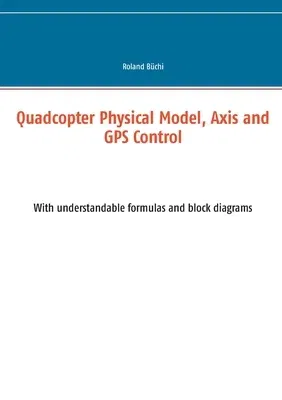Roland Büchi
(Author)Quadcopter Physical Model, Axis and GPS Control: With understandable formulas and block diagramsPaperback, 31 May 2021

Qty
1
Turbo
Ships in 2 - 3 days
In Stock
Free Delivery
Cash on Delivery
15 Days
Free Returns
Secure Checkout
Print Length
38 pages
Language
English
Publisher
Books on Demand
Date Published
31 May 2021
ISBN-10
3753491047
ISBN-13
9783753491042
Description
Product Details
Author:
Book Format:
Paperback
Country of Origin:
US
Date Published:
31 May 2021
Dimensions:
21.01 x
14.81 x
0.2 cm
ISBN-10:
3753491047
ISBN-13:
9783753491042
Language:
English
Pages:
38
Publisher:
Weight:
58.97 gm

